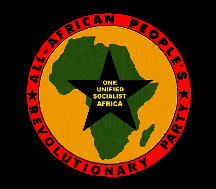
A Brief History of Pan-Africanism

In 1919, W.E.B. Dubois convened the first Pan-African Congress which logically followed the first Pan African Conference. Many of the leading figures of the Conference had died. At the same time, by 1917 millions of Africans throughout the world, from Nova Scotia to Soweto , had joined and helped to build the Universal Negro Improvement Association led by the Honorable Marcus Mosiah Garvey. The Garvey inspired U.N.I.A. with the slogan "Africa for the Africans those at Home and those abroad" gave mass character and militancy to Pan Africanism.
Between 1919 and 1945 Dubois presided over five Pan-African Congresses held in the U.S.A. and Europe. The congresses preceding the fifth Pan-African Congress of 1945 were concerned with making protestations to the imperial powers, seeking redress against the brutal exploitation and discrimination of Africans worldwide. The dominant strategy was to appeal to the conscience of the governments and people of these powers through contradictions between their words and deeds, between civilizing and colonizing. At the same time by exposing the enemy, it was increasing the hatred of the African masses against an unjust system(colonialism).
The fifth Congress, taking place in Manchester, England took a qualitative leap. The majority of the Africans who participated in this congress were born on the continent, with many workers swelling their ranks. Also present were political activists of high quality, including Jomo Kenyatta, George Padmore, Kwame Nkrumah, C.L.R. James, Amy Garvey(first wife of Marcus Garvey).
The fifth Pan-African Congress gave a mass character to the Pan-African Movement. With Garveyite enthusiasms the fifth Pan-African Congress decided to organize the masses of Africans as the only insurance and motive force for liberation. Mass political parties sprang up the length and breadth of Africa and the African Diaspora.
Pan-Africanism has been a continuous force. In 1957, with the independence of Ghana under Osagyefo Kwame Nkrumah, Pan-Africanism finally came Home-it finally had a fertile soil from which it could be nourished, and grow to mass proportions. In 1958, only eight Africicn countries had become independent. By 1960, because of relentless pressure from the Pan-Africanist forces, more than two-thirds of Africa had become independent. During this same period, Africans in Britain, the Caribbean, South America and the United States of America were involved in mass struggle leading to independence and concessions in favour of democratic and human rights.
Pan-Africanism has always meant the active involvement of Africans at Home and abroad in an organized manner.